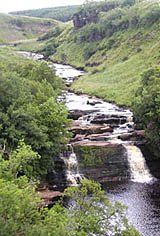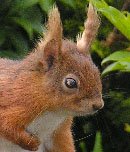
Gilsland is a small village of around 400 souls, situated uncomfortably astride the Northumberland / Cumbria border - which is here defined by the River Irthing and its tributary the Poltross Burn. Local politics are further complicated by the presence of three parish councils, although most of the population live in Thirlwall, on the Northumbrian side.
300 years ago the name Gilsland referred only to the Barony of Gilsland, present-day Gilsland then being the hamlets of Crooks, The Gap, Rosehill and Mumpshall. Only the spa (the actual well, not the hotel) was known as Gilsland Spa, named after the Barony, but with the building of the Shaws or Spa Hotel in the late 18th century the name Gilsland became centred on the group of buildings around it. In the 1860s the station name was changed from Rosehill to Gilsland and people on both sides of the border were invited to think of themselves as a village. The idea still has not really caught on.
Gilsland and its immediate surroundings contain many interesting and historic buildings and other sites, but as most fail to fall into officially approved "heritage" periods or myths they are rarely mentioned. One of the eventual objectives of this website is to correct this bias.
The area is also fascinating geologically as fossiliferous, coal-bearing Lower Carboniferous limestones, sandstones and shales outcrop in river gorges and crags, while the igneous intrusion of the Whin Sill imposes its keynote theme upon the landscape. Geographically, we have a wealth of actively eroding glacial landforms, and the typical flora and wildlife of upland northern Britain flourishes in the deciduous woodland, moorland and rough pasture, although our native red squirrel is currently under threat.
Finally, I welcome correspondence about the area, and contributions on any aspect of Gilsland and its surrounding area for this website.
WH
